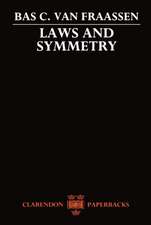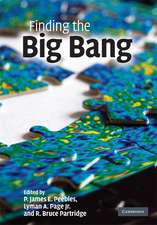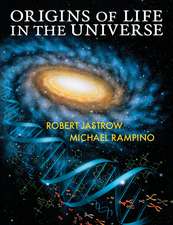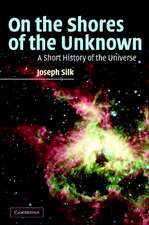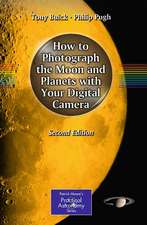Grating Spectroscopes and How to Use Them: The Patrick Moore Practical Astronomy Series
Autor Ken M. Harrisonen Limba Engleză Paperback – 2 mar 2012
Din seria The Patrick Moore Practical Astronomy Series
-
 Preț: 258.21 lei
Preț: 258.21 lei -
 Preț: 164.94 lei
Preț: 164.94 lei -
 Preț: 324.21 lei
Preț: 324.21 lei -
 Preț: 255.10 lei
Preț: 255.10 lei - 8%
 Preț: 581.98 lei
Preț: 581.98 lei -
 Preț: 159.16 lei
Preț: 159.16 lei -
 Preț: 282.38 lei
Preț: 282.38 lei -
 Preț: 308.55 lei
Preț: 308.55 lei -
 Preț: 309.87 lei
Preț: 309.87 lei -
 Preț: 332.98 lei
Preț: 332.98 lei -
 Preț: 276.91 lei
Preț: 276.91 lei -
 Preț: 243.94 lei
Preț: 243.94 lei -
 Preț: 183.40 lei
Preț: 183.40 lei -
 Preț: 378.09 lei
Preț: 378.09 lei -
 Preț: 302.20 lei
Preț: 302.20 lei -
 Preț: 210.01 lei
Preț: 210.01 lei -
 Preț: 212.68 lei
Preț: 212.68 lei -
 Preț: 271.39 lei
Preț: 271.39 lei -
 Preț: 252.91 lei
Preț: 252.91 lei -
 Preț: 281.95 lei
Preț: 281.95 lei -
 Preț: 289.85 lei
Preț: 289.85 lei -
 Preț: 218.84 lei
Preț: 218.84 lei -
 Preț: 282.38 lei
Preț: 282.38 lei -
 Preț: 128.86 lei
Preț: 128.86 lei -
 Preț: 301.10 lei
Preț: 301.10 lei -
 Preț: 204.78 lei
Preț: 204.78 lei -
 Preț: 307.44 lei
Preț: 307.44 lei -
 Preț: 303.07 lei
Preț: 303.07 lei -
 Preț: 258.83 lei
Preț: 258.83 lei -
 Preț: 155.25 lei
Preț: 155.25 lei -
 Preț: 193.97 lei
Preț: 193.97 lei -
 Preț: 208.26 lei
Preț: 208.26 lei -
 Preț: 279.09 lei
Preț: 279.09 lei -
 Preț: 303.51 lei
Preț: 303.51 lei -
 Preț: 277.54 lei
Preț: 277.54 lei -
 Preț: 208.51 lei
Preț: 208.51 lei -
 Preț: 214.86 lei
Preț: 214.86 lei -
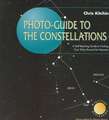 Preț: 304.58 lei
Preț: 304.58 lei -
 Preț: 220.57 lei
Preț: 220.57 lei -
 Preț: 157.32 lei
Preț: 157.32 lei -
 Preț: 275.98 lei
Preț: 275.98 lei -
 Preț: 288.98 lei
Preț: 288.98 lei -
 Preț: 261.49 lei
Preț: 261.49 lei -
 Preț: 279.09 lei
Preț: 279.09 lei -
 Preț: 160.82 lei
Preț: 160.82 lei -
 Preț: 254.90 lei
Preț: 254.90 lei -
 Preț: 304.38 lei
Preț: 304.38 lei -
 Preț: 256.84 lei
Preț: 256.84 lei
Preț: 327.01 lei
Nou
Puncte Express: 491
Preț estimativ în valută:
62.57€ • 65.33$ • 51.79£
62.57€ • 65.33$ • 51.79£
Carte disponibilă
Livrare economică 14-28 martie
Livrare express 27 februarie-05 martie pentru 55.53 lei
Preluare comenzi: 021 569.72.76
Specificații
ISBN-13: 9781461413967
ISBN-10: 1461413966
Pagini: 188
Ilustrații: XVII, 167 p. 110 illus., 87 illus. in color.
Dimensiuni: 155 x 235 x 10 mm
Greutate: 0.38 kg
Ediția:2012
Editura: Springer
Colecția Springer
Seria The Patrick Moore Practical Astronomy Series
Locul publicării:New York, NY, United States
ISBN-10: 1461413966
Pagini: 188
Ilustrații: XVII, 167 p. 110 illus., 87 illus. in color.
Dimensiuni: 155 x 235 x 10 mm
Greutate: 0.38 kg
Ediția:2012
Editura: Springer
Colecția Springer
Seria The Patrick Moore Practical Astronomy Series
Locul publicării:New York, NY, United States
Public țintă
Popular/generalCuprins
What is a Transmission Grating?.- Setting Up the Grating.- Recording Your Spectra.- Analyzing the Spectra.- Suitable Projects.- Improving Your Grating Spectroscope.
Notă biografică
An avid amateur astronomer, Ken Harrison was born in Scotland where he trained as a mechanical engineer. He has been designing and building telescopes since the early 1960's and has built a series of spectroscopes for use on medium-sized amateur telescopes. He was Section Director of the Astronomical Society of Victoria, Australia, Astrophotographic Section for ten years and past president of the society. Harrison's university thesis (and his first publication) was Design and Construction of the Isaac Newton 98-inch Telescope (Strathclyde University, 1970). Since then he has published articles on optical design including "Blink Comparison" (BAA Journal Vol. 87, pg. 94) and "Method of Radially Supporting Large Mirrors" (Vol. 87, p. 154). He has made contributions to the Astronomical Society of Victoria Newslettre and was for three years the Editor of the 'N'Daba' newsletter of the Natal Centre, Astronomical Society of Southern Africa. His first book for Springer, called Astronomical Spectroscopy for Amateurs (2010) serves as a useful companion to this volume.
Textul de pe ultima copertă
Transmission grating spectroscopes look like simple filters and are designed to screw into place on the eyepiece tube of a telescope for visual use, or into a camera adapter for digicam or CCD imaging. They are relatively inexpensive and by far the easiest type of astronomical spectroscope to use, and so are the starting point for most beginners.
Using the most popular commercially made filter gratings - from Rainbow Optics in the United States to Star Analyser in the United Kingdon - as examples, the book provides all the information needed to set up and use the grating to obtain stellar spectra. It also presents methods of analyzing the results. No heavy mathematics or formulas are involved, although a reasonable level of proficiency in using an astronomic telescope and, if relevant, imaging camera, is assumed.
This book contains many practical hints and tips - something that is almost essential to success when starting out. It encourages new users to get quick results, and by following the worked examples, successfully carry out basic analysis of spectra.
With this author's earlier (intermediate level) book, Astronomical Spectroscopy for Amateurs, this book provides a perfect companion for those who want to know a lot more about what spectrographs tell us about the stars. And you'd be surprised at how much they tell us!
Using the most popular commercially made filter gratings - from Rainbow Optics in the United States to Star Analyser in the United Kingdon - as examples, the book provides all the information needed to set up and use the grating to obtain stellar spectra. It also presents methods of analyzing the results. No heavy mathematics or formulas are involved, although a reasonable level of proficiency in using an astronomic telescope and, if relevant, imaging camera, is assumed.
This book contains many practical hints and tips - something that is almost essential to success when starting out. It encourages new users to get quick results, and by following the worked examples, successfully carry out basic analysis of spectra.
With this author's earlier (intermediate level) book, Astronomical Spectroscopy for Amateurs, this book provides a perfect companion for those who want to know a lot more about what spectrographs tell us about the stars. And you'd be surprised at how much they tell us!
Caracteristici
The perfect starting point for first-time spectroscope users, with no heavy mathematics and with information on how to buy and use an entry-level spectroscope, which costs $150 vs. the $1,500+ of more advanced types Describes how to buy and use an entry-level spectroscope Includes specific details on the transmission filters for cameras and telescopes Packed with practical tips on how to use simple commercial grating spectroscopes Presents clear worked-through examples of how to analyze spectra from the stars and planets Includes supplementary material: sn.pub/extras


